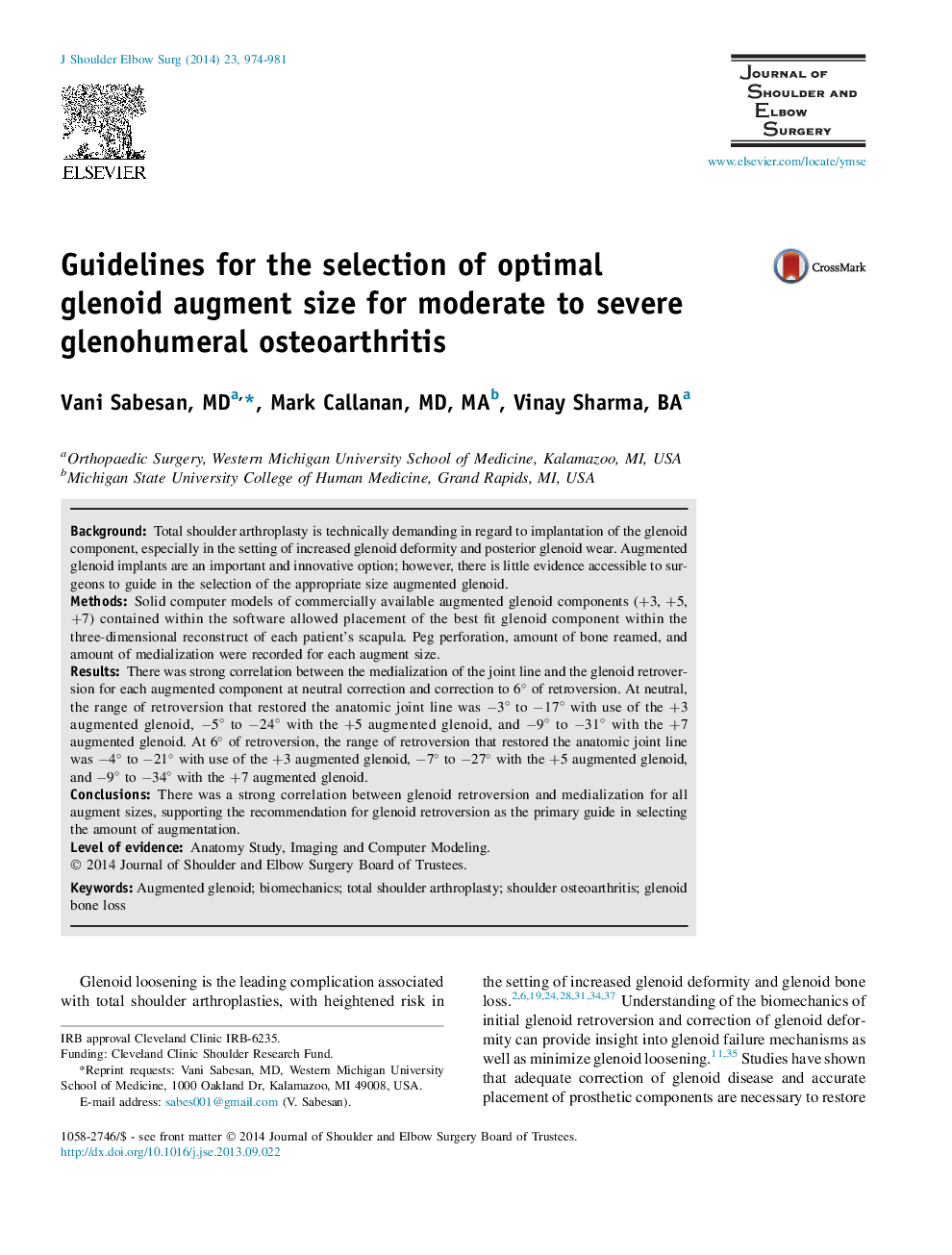| Article ID | Journal | Published Year | Pages | File Type |
|---|---|---|---|---|
| 4074239 | Journal of Shoulder and Elbow Surgery | 2014 | 8 Pages |
BackgroundTotal shoulder arthroplasty is technically demanding in regard to implantation of the glenoid component, especially in the setting of increased glenoid deformity and posterior glenoid wear. Augmented glenoid implants are an important and innovative option; however, there is little evidence accessible to surgeons to guide in the selection of the appropriate size augmented glenoid.MethodsSolid computer models of commercially available augmented glenoid components (+3, +5, +7) contained within the software allowed placement of the best fit glenoid component within the three-dimensional reconstruct of each patient’s scapula. Peg perforation, amount of bone reamed, and amount of medialization were recorded for each augment size.ResultsThere was strong correlation between the medialization of the joint line and the glenoid retroversion for each augmented component at neutral correction and correction to 6° of retroversion. At neutral, the range of retroversion that restored the anatomic joint line was −3° to −17° with use of the +3 augmented glenoid, −5° to −24° with the +5 augmented glenoid, and −9° to −31° with the +7 augmented glenoid. At 6° of retroversion, the range of retroversion that restored the anatomic joint line was −4° to −21° with use of the +3 augmented glenoid, −7° to −27° with the +5 augmented glenoid, and −9° to −34° with the +7 augmented glenoid.ConclusionsThere was a strong correlation between glenoid retroversion and medialization for all augment sizes, supporting the recommendation for glenoid retroversion as the primary guide in selecting the amount of augmentation.
